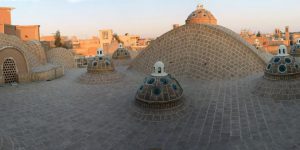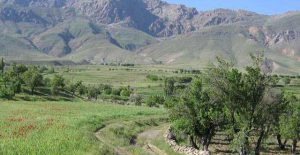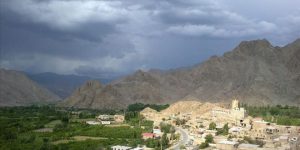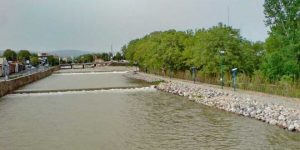
Marriage is an important factor among Ilam people. In past times marriages took place between people with the same social classes as Valian, Khan and Kad Khoda.
Nowadays, marriages take place between people with the same class position. Marring with one of one’s family members is an honor because they believed that women of their family should not married with strangers. They also believed that women of their family are kinder than strange women. They have a popular idiom among themselves which is; “if the family got your meat, he/she would not break your bones”.
Somewhere in this province especially in Dreshahr District people have “Sarkhane” or “Hambahr” Groom which means that the groom does live with the bride’s family. Wealthy families who have not any son and need masculine help take Sarkhane groom. The groom has been chosen from family men. The groom election took place by the bride’s family or by the groom himself. The mate election has taken place since the bride or groom birth after cutting the Umbilical Cord or during puberty period.
Nomad used to conduct a ceremony for cutting the Umbilical Cord which rarely takes place nowadays. Every time a girl was born her Umbilical Cord was cut with this intention that she should marry with a specified boy in the family when she reaches her puberty period.
The bride election took place by the groom’s mother and father then the groom’s mother or father or family would announce the bride’s family about their election. If they agree, a date will be chosen for the marriage proposal.
The proposal took place by the head of the groom family and tribe. They choose between traditional holy days, Sunday, Tuesday, or Thursday, and go to bride’s house. After dinner one of the groom’s family member talk greatly about the subject or proposal. After that one of the male family members of the bride confirm their proposal.
In this meeting the money which should be paid by the groom, dowry is being determined. Then the brother of the groom or brother of any groom’s family members kisses the hand of the bride’s family which is called Dastbusi (=hand kissing) ceremony. Then a man of the groom’s family or the groom himself give the wedding ring to the bride. Besides what the groom should pay, Baha Shirini also should be paid by him which is actually a mule or gun.
After a while, another ceremony took place in the bride’s father house which was paid by the groom. The whole family of the bride and groom has been invited to this ceremony for lunch. After lunch men leave the ceremony but women stay and take the bride to a room and put Iranian clothes named Dez on her and sing a traditional song named Humeh in Lur dialect, while surrounding her. This ceremony is called Dez or Dastgirany.
One day after this ceremony, the groom has been invited to the bride’s father house. Bride’s brother or any other boy from the bride’s family is the messenger of this invitation.
The groom will give a gift, money or clothes to that messenger and go with him to his bride’s father house then give a gift to the bride’s father. In return, the father decreases dowry or other costs. After this invitation, the groom can come and go to the bride’s father house (but not before that).
While the groom’s family got ready for the wedding ceremony, the groom’s father and one of his family go to the bride’s house to settle the wedding date. In this case, the bride’s mother should be satisfied so the groom’s father gives her some money as gift and bride’s mother get that money to show her agreement then the date will be settled.
In engagement day the two family, bride, and groom go to register office or Akhund. Then the wedding sermon has been read.
In this day the groom buys some clothes and furniture for the bride and some clothes for the bride’s family who is with them.
The day before the wedding ceremony, the women of the groom’s family go to the bride’s house for dinner and then go to the bath to conduct the Henna ceremony. The groom pays the dinner for women which is called Pavio.
A group of equestrians has been invited to the ceremony to bring the bride.
- Please feel free to call us on 00989020038045 (Phone, Whatsapp, Telegram) or contact by info@mustseeiran.com, if you require any further information.
Follow us on Instagram @mustseeiran.com_insta





